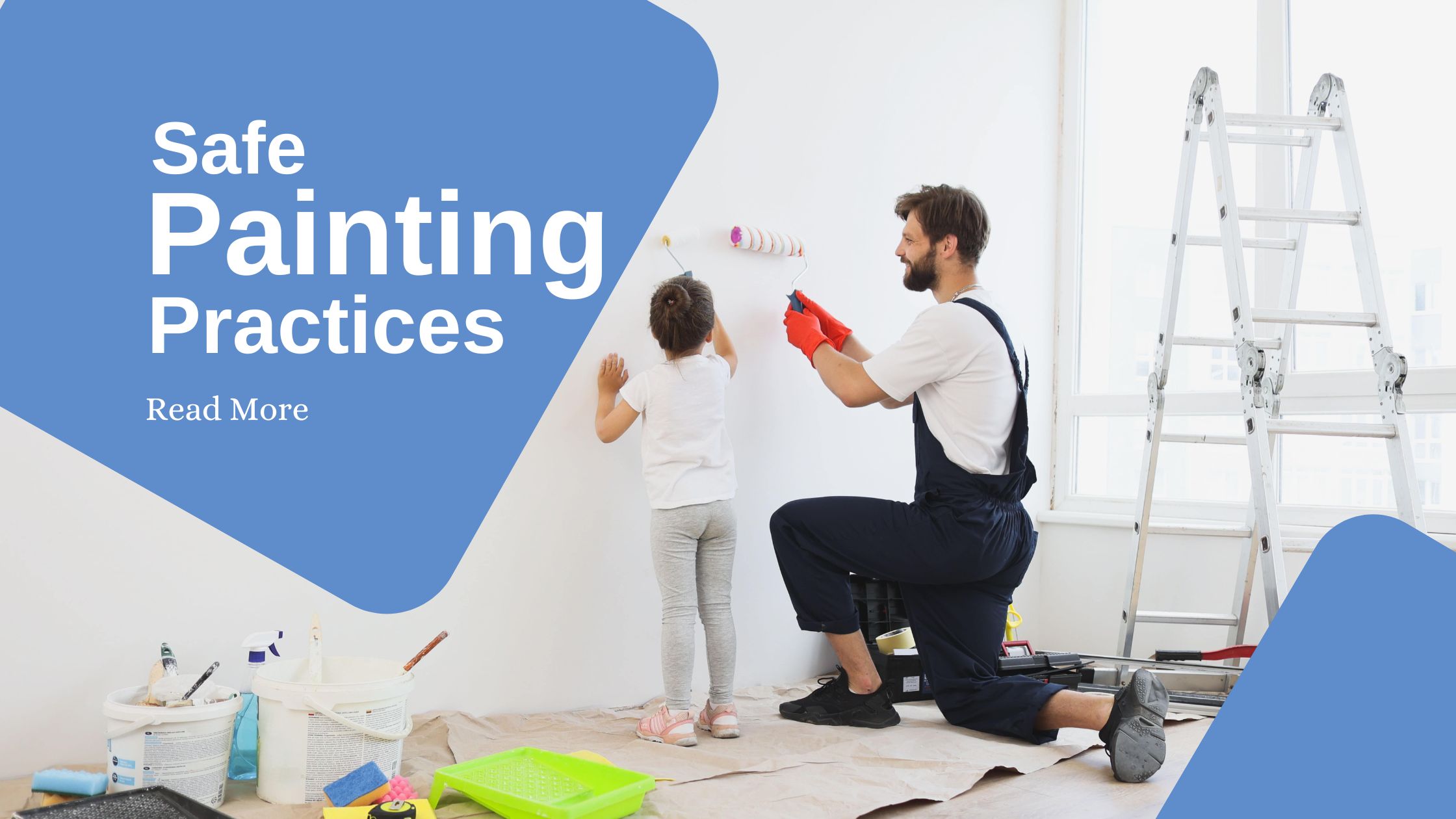When painting your home, safety should always come first, whether you are a professional painter or a homeowner. Painting can present several hazards if not done correctly. As a professional or a homeowner, you can provide not only personal safety but also quality work by following the right safety procedures.
From chemicals and paint to safeguarding your workspace, this article outlines the safest painting methods. It ranges from the fundamentals of paint through to tool selection, safety precautions, potential risks, and the pertinent requirements for experienced painters.
Let’s read the article to discover everything about the safe painting methods.
Choosing the Right Paint
Paints vary in composition, and information regarding their properties is essential for safety. Oil-based paints contain high levels of volatile organic compounds (VOCs), which emit toxic fumes that cause dizziness, affect the respiratory system, and result in long-term health impairment on prolonged exposure. Even though water-based paints emit lower VOCs, they must also be ventilated well to prevent risks.
Reading paint labels and employing low-VOC or “green” paints can significantly reduce exposure to toxic chemicals. It is also advisable to store paints in sealed containers and dispose of them according to environmental regulations.
Ensuring Proper Ventilation
It is difficult working in a well-ventilated space, especially when painting and using solvents that give off fumes. Opening windows and doors, using exhaust fans, and procuring air purifiers assist in providing clean air. In cases of painting minor spaces, using a respirator assists in protecting against inhaling toxic fumes.
Personal Protective Equipment (PPE) for Painters
Safety gear is a significant element in minimising health risks. A mask or respirator blocks the fumes and dust from reaching the body when on, and safety goggles protect the eyes from paint splatters. Gloves safeguard against direct exposure to chemicals and thus minimise irritation and sensitisation. Coveralls or loose-fitting, long-sleeved clothing provide an extra layering, which holds the skin away from paints and solvents. Proper investment in PPE leads to a successful painting experience, particularly for large projects.
Safe Work Practices and Ladder Safety
Proper work habits will prevent injury and make for an uneventful painting process. A well-sorted workspace prevents tripping over equipment, paint cans, or cords. Ladders must be on level surfaces, and three points of contact must be maintained when climbing up. Falling is all too common from overreaching with ladders, so it’s better to transfer the ladder than stretch. Taking regular breaks avoids fatigue, which leads to careless mistakes and accidents.
Storing Paints and Chemicals Safely
Paints, thinners, and solvents should be stored in their original, tightly sealed containers to prevent spills and contamination. Keeping them in a dry place away from direct sunlight and heat sources reduces the risk of fire hazards. When disposing of leftover paint, following local regulations is essential to avoid environmental damage. Never pour solvents or paint down the drain since they pollute water sources.
Dealing with Lead Paint and Asbestos
The older buildings contain hazardous materials like lead paint and asbestos. Remodelling them exposes the unhealthy, toxic dust. It is advisable to do a lead paint test on an old house before starting any painting project. Where there is the presence of lead, wet sanding techniques or professionals can safely remove it. There are no asbestos products that should be removed or touched without professional inspection, as inhaling asbestos can lead to severe lung disease.
Workplace Health and Safety
Both professionals and homeowners are benefited by knowing Australian safety regulations. Professional workplace safety training equips professionals with an understanding of rules, handling of tools, and emergency procedures. Homeowners who paint themselves also need to know basic safety measures before starting. Knowledge of how to handle spills of paint, chemical contact, or accidental destruction ensures everyone’s safe painting experience.
Final Thoughts
Safe painting practices protect not only the individual but also others in their vicinity. You can ensure the painting area is safe by following the tips below. By selecting appropriate paint, using protection gear, maintaining good ventilation, and following safe work practices, painters can minimise health risks and render the work area safe.
Moreover, if you want to paint or repaint your house in safe hands, you can hire expert residential painters in Sydney like Priority One Coatings to have the best quality result.

